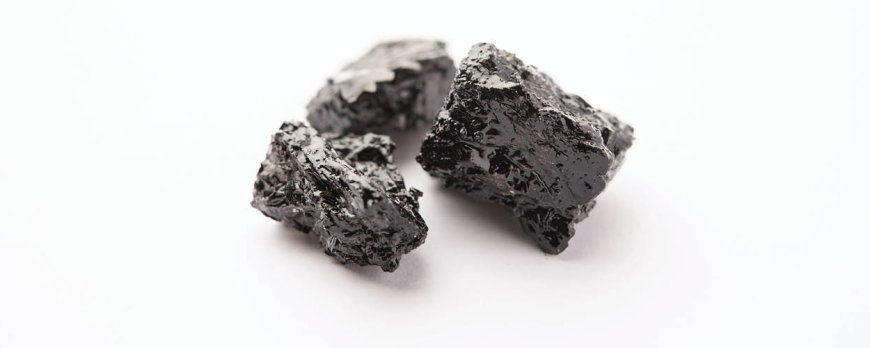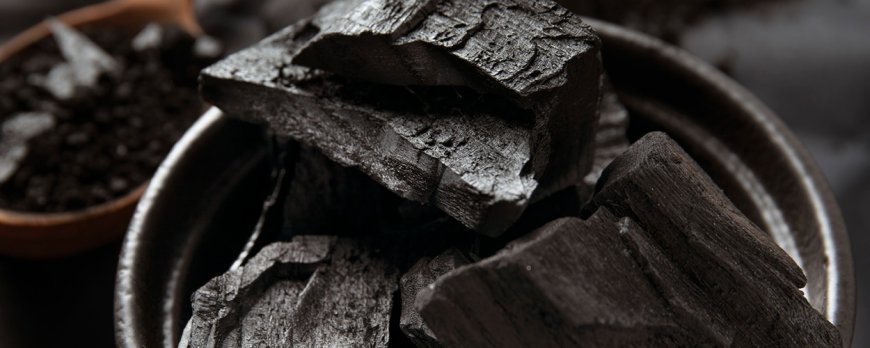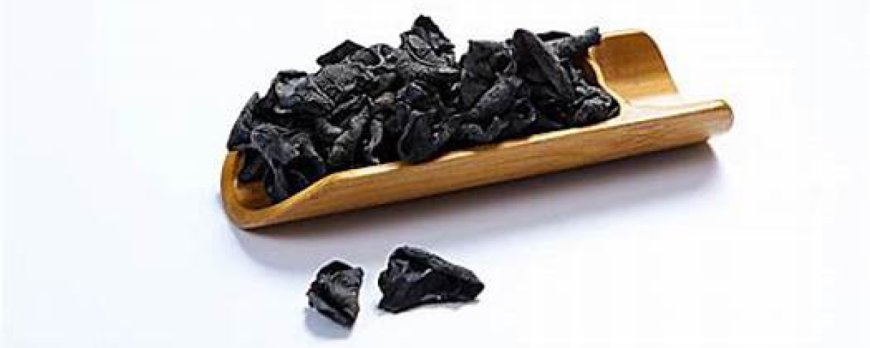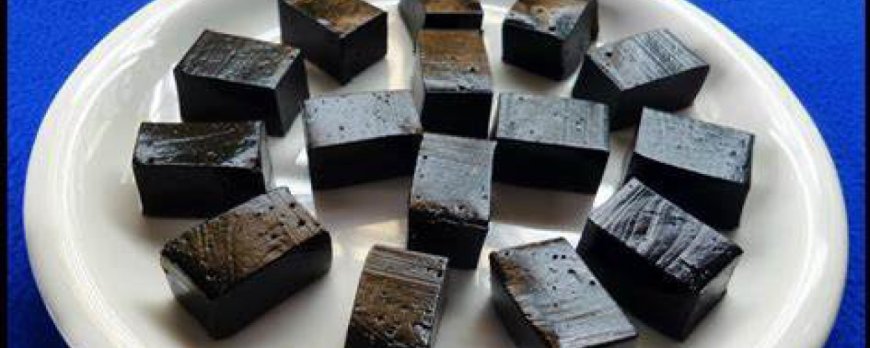How is Shilajit formed?
Explore the fascinating process behind the formation of Shilajit, a precious substance revered for its health benefits. Learn 'How is Shilajit formed?'.

How is Shilajit Formed?
Shilajit, a precious substance known for its health benefits, is formed through a fascinating process in the mountains. It is a natural organic-mineral substance that is primarily found in mountain crevices and caves. This blackish-brown powder or exudate is found in various mountain ranges around the world, including the Himalayas, Karakoram, Gilgit-Baltistan, Russia, and Peru.
The formation of Shilajit has been the subject of much debate, but it is believed to be of plant origin. It is formed through the decomposition of plant remains that have undergone metamorphosis under rock pressure. Over time, these decomposed plant matter mix with minerals and other organic components to create Shilajit.
Shilajit has a rich composition, containing a wide range of mineral substances such as calcium, magnesium, sodium, and iron. It also includes more than 20 elements, as well as organic components like proteins, carbohydrates, amino acids, fatty acids, and phenolic lipids. These components contribute to the unique properties and potential health benefits of Shilajit.
Shilajit is classified into different types based on the metal it contains. Red Shilajit, also known as gold Shilajit, contains high levels of gold. White Shilajit, or silver Shilajit, contains silver, while blue Shilajit, or copper Shilajit, contains copper. Black Shilajit, or iron Shilajit, contains iron. Each type of Shilajit may have slightly different properties and uses.
Shilajit has a long history of use in traditional medicine, particularly in Ayurveda. It has been revered for its healing properties for thousands of years and is known for its antioxidant, anti-inflammatory, adaptogenic, and spermatogenic activities. However, further research is needed to fully understand the mechanism of action and to establish its efficacy and safety in larger studies involving animals and humans.

Key Takeaways:
- Shilajit is a natural organic-mineral substance formed in mountain crevices and caves.
- It is believed to be of plant origin and is formed through the decomposition of plant remains under rock pressure.
- Shilajit contains a wide range of mineral substances and organic components, including proteins, carbohydrates, and phenolic lipids.
- It is classified into different types based on the metal it contains, such as gold, silver, copper, and iron Shilajit.
- Shilajit is known for its antioxidant, anti-inflammatory, adaptogenic, and spermatogenic activities.
Shilajit Formation Process
The formation of Shilajit involves several stages and is influenced by various factors, ultimately resulting in the creation of this unique substance. It begins with the accumulation of plant materials in mountain crevices and caves, where they undergo decomposition and metamorphosis under immense rock pressure. Over time, this process leads to the formation of a dark, sticky exudate known as Shilajit.
The timeline of Shilajit formation can span thousands of years, as the plant remains slowly transform into a rich mineral and organic matrix. This matrix is composed of a diverse range of elements and compounds, including calcium, magnesium, sodium, iron, proteins, carbohydrates, amino acids, fatty acids, and phenolic lipids.
Geological factors also play a significant role in the formation of Shilajit. The presence of certain rock formations, such as sedimentary and metamorphic rocks, provides the necessary conditions for the organic materials to undergo decomposition and mineralization. The specific geological composition of the region contributes to the unique properties and composition of Shilajit found in different locations around the world.
Shilajit Formation Stages:
- Accumulation of plant materials in mountain crevices and caves
- Decomposition and metamorphosis under rock pressure
- Transformation into a dark, sticky exudate known as Shilajit
- Mineralization and organic synthesis, resulting in a diverse composition
Shilajit Formation Factors:
- Presence of suitable rock formations
- Environmental conditions, such as temperature and moisture
- Microbial activity during decomposition
- Pressure and time
The complex and fascinating process of Shilajit formation highlights the natural intricacies of our world. Understanding its origins and formation stages allows us to appreciate the unique composition and potential health benefits of this ancient substance.

Shilajit Origins
Shilajit is primarily found in mountain crevices and caves, with various regions around the world being known for its presence. One of the most notable regions where shilajit is found is in the Himalayas, a majestic mountain range that stretches across several countries, including India, Nepal, Bhutan, and Tibet. The high altitudes and unique geographical conditions of the Himalayas contribute to the formation of shilajit, making it a sought-after natural substance in traditional medicine.
Other regions where shilajit can be found include the Karakoram mountain range, located in the northern areas of Pakistan, as well as Gilgit-Baltistan, a region known for its breathtaking landscapes and rich mineral resources. Shilajit is also found in Russia, particularly in the Altai Mountains, where it has been used in traditional Russian medicine for centuries. Additionally, shilajit can be found in South America, specifically in the Andes Mountains of Peru, where it is known as "Mumiyo" and has been used in traditional Peruvian medicine for its supposed health benefits.
Extraction Methods
Shilajit extraction methods vary depending on the region and the specific type of shilajit being harvested. In the Himalayas, shilajit is typically collected from mountain crevices and caves during the summer months when the temperatures rise and the substance becomes more easily accessible. It is then carefully harvested, processed, and purified to ensure its quality.
In Russia, shilajit extraction involves carefully collecting the substance from rock crevices and cliffs, usually in the early spring or late summer when the temperature and humidity conditions are optimal. The shilajit is then processed using traditional methods to remove impurities and enhance its bioactive properties.
Overall, the extraction methods employed for shilajit aim to preserve its natural composition and maximize its potential health benefits. By understanding the origins and extraction methods of shilajit, we can gain a deeper appreciation for this unique natural substance and its traditional uses in various forms of medicine.
Shilajit Composition
Shilajit is a complex substance that consists of a diverse array of mineral substances and organic components. It is composed of more than 20 elements, including calcium, magnesium, sodium, and iron, along with various trace minerals. These mineral substances play a crucial role in maintaining the body's overall health and functioning.
Additionally, shilajit contains a range of organic components, such as proteins, carbohydrates, amino acids, fatty acids, and phenolic lipids. These organic compounds contribute to the overall therapeutic properties of shilajit and make it a valuable substance in traditional medicine.
In traditional Ayurvedic texts, shilajit is often described as "rasayana," meaning a substance that promotes rejuvenation and longevity. This can be attributed to the rich composition of shilajit, which provides a wide range of bioactive constituents that support various bodily functions.
Key Components of Shilajit:
- Mineral substances (calcium, magnesium, sodium, iron, etc.)
- Proteins
- Carbohydrates
- Amino acids
- Fatty acids
- Phenolic lipids
These components work synergistically to exert various therapeutic effects, including antioxidant, anti-inflammatory, adaptogenic, and spermatogenic activities. The antioxidant properties of shilajit help protect cells from oxidative stress, while its anti-inflammatory properties may support a healthy inflammatory response in the body.
Furthermore, shilajit's adaptogenic properties are believed to enhance the body's ability to cope with physical and mental stress, promoting overall well-being. Its spermatogenic activities have been studied for their potential effects on male reproductive health.
To ensure the quality, efficacy, and safety of shilajit preparations, purification and standardization processes are crucial. These processes aim to remove impurities and ensure that the bioactive constituents are present in optimal amounts. By adhering to strict quality control measures, shilajit products can deliver consistent results and meet the expectations of consumers seeking its potential health benefits.
Shilajit Types
Depending on the metal it contains, Shilajit can be classified into different types, each with its own unique properties. The various types of Shilajit are distinguished by the color of the metal present within the substance.
Red Shilajit (Gold)
Red Shilajit, also known as Gold Shilajit, is prized for its vibrant red hue and is believed to contain gold particles. This type of Shilajit is highly regarded for its potential rejuvenating and revitalizing properties.
White Shilajit (Silver)
White Shilajit, or Silver Shilajit, is characterized by its white or silver color. It is believed to contain silver particles and is often associated with mental clarity and enhanced cognitive function.
Blue Shilajit (Copper)
Blue Shilajit, or Copper Shilajit, is distinguished by its blue shade and is thought to contain copper particles. This type of Shilajit is often associated with promoting strong immune function and supporting the body's natural defense mechanisms.
Black Shilajit (Iron)
Black Shilajit, or Iron Shilajit, is the most common type and is characterized by its dark black color. It is believed to contain iron particles and is often associated with promoting energy, vitality, and overall well-being.
These different types of Shilajit offer a range of potential benefits and are often used in traditional medicine systems for their unique properties. It's important to note that the classification of Shilajit into these types is based on its appearance and the presence of certain metals, and further research is needed to fully understand the specific effects and mechanisms of action associated with each type.

Traditional Uses of Shilajit
Shilajit has a rich history of use in traditional medicine, where it has been valued for its therapeutic benefits for thousands of years. This natural organic-mineral substance has been revered in Ayurveda, one of the world's oldest holistic healing systems. It is believed to possess a wide range of healing properties and has been used to address various health conditions.
Here are some of the traditional uses of Shilajit:
- Boosting energy levels and combating fatigue
- Supporting overall vitality and well-being
- Enhancing cognitive function and mental clarity
- Improving physical performance and stamina
- Promoting healthy aging and longevity
- Aiding in digestion and gut health
- Supporting the immune system
- Providing relief from joint pain and inflammation
- Strengthening the reproductive system and improving fertility
It is important to note that while Shilajit has a long history of traditional use, it is always recommended to consult with a healthcare professional before incorporating it into your wellness routine. This will ensure that it is appropriate for your specific needs and that it does not interfere with any medications or existing health conditions.
Potential Health Benefits of Shilajit
Shilajit has been the subject of research for its potential health benefits, showcasing its diverse range of positive effects on the body. Its composition, rich in minerals and organic components, contributes to its therapeutic properties. Here are some of the potential health benefits associated with Shilajit:
- Antioxidant Activity: Shilajit exhibits strong antioxidant properties, helping to neutralize harmful free radicals in the body. This antioxidant activity may contribute to its potential to protect against oxidative stress and support overall cellular health.
- Anti-inflammatory Effects: Studies suggest that Shilajit may possess anti-inflammatory properties, which could help reduce inflammation in the body. This anti-inflammatory effect may have potential applications in the management of inflammatory conditions.
- Adaptogenic Properties: Shilajit is classified as an adaptogen, a substance that helps the body adapt to physical and mental stress. It is believed to support the body's natural ability to cope with stress, enhance energy levels, and improve overall well-being.
- Spermatogenic Activity: Shilajit has traditionally been used in Ayurveda to support male reproductive health. Research suggests that it may have spermatogenic activity, influencing sperm count, motility, and morphology. These findings are promising for individuals experiencing fertility issues.
It is important to note that while these potential health benefits have been observed in studies, further research is needed to fully understand the mechanism of action and establish their efficacy and safety in larger-scale trials involving animals and humans.
Purification and Standardization of Shilajit
To ensure the quality, efficacy, and safety of Shilajit preparations, purification and standardization processes are crucial, focusing on its bioactive constituents. Shilajit, being a complex organic-mineral substance, contains a diverse range of compounds that contribute to its therapeutic potential. Purification methods aim to remove impurities and other unwanted substances, while standardization processes ensure consistent levels of bioactive constituents in different batches of Shilajit.
One common purification technique involves the use of organic solvents to dissolve Shilajit and separate it from insoluble impurities. The solvent is then evaporated, leaving behind a purified extract. Another method is filtration, where the Shilajit solution is passed through a fine mesh to remove particulate matter. These purification techniques help eliminate contaminants, ensuring the final product is of high purity.
Standardization of Shilajit involves quantifying its bioactive constituents, such as fulvic acid, humic acid, and mineral content. This is achieved through various analytical techniques, including chromatography and spectroscopy. By establishing standardized parameters for these constituents, manufacturers can ensure consistency in the composition and potency of Shilajit products. This is crucial for maintaining its therapeutic efficacy and enabling reliable dosage recommendations.
Furthermore, purification and standardization processes also play a role in ensuring the safety of Shilajit preparations. They help minimize the presence of potentially harmful substances, such as heavy metals and microbial contaminants. Quality control measures, including rigorous testing and adherence to regulatory guidelines, are essential in the production of purified and standardized Shilajit products.

Current Research and Future Directions
While Shilajit shows promising potential, more research is needed to fully comprehend its mechanism of action and to validate its effectiveness and safety. The following are areas of interest for current and future research:
- Pharmacological Studies: Further investigation is required to understand the specific bioactive compounds present in Shilajit and their interactions with the human body. Researchers aim to identify the key components responsible for its beneficial effects, such as its antioxidant and anti-inflammatory properties. This will help in developing standardized Shilajit formulations for various health conditions.
- Clinical Trials: Large-scale clinical trials involving both animals and humans are necessary to evaluate the efficacy and safety of Shilajit in treating specific health conditions. These studies will provide valuable evidence regarding its therapeutic potential and help establish dosage guidelines.
- Mechanism of Action: Understanding the precise mechanisms through which Shilajit exerts its therapeutic effects is crucial. Researchers are exploring its impact on various cellular pathways and physiological processes to unravel the underlying mechanisms responsible for its adaptogenic, anti-aging, and fertility-enhancing properties.
-
Combination Therapies:
Investigating the synergistic effects of combining Shilajit with other natural substances or conventional medications may lead to enhanced therapeutic outcomes. This research could potentially identify new treatment options and improve existing therapeutic strategies.
By conducting comprehensive research in these areas, scientists and healthcare professionals will gain a deeper understanding of Shilajit's potential benefits, optimal usage, and safety profiles. This knowledge will contribute to evidence-based practices and empower individuals seeking alternative solutions for their health and wellness needs.
Conclusion
In conclusion, Shilajit is a remarkable substance formed through a unique process, with potential health benefits that warrant further exploration.
Shilajit is a natural organic-mineral substance that is formed in the mountains, primarily in mountain crevices and caves. It is a blackish-brown powder or exudate found in various mountain ranges around the world, including the Himalayas, Karakoram, Gilgit-Baltistan, Russia, and Peru.
The origin of shilajit has been a subject of debate, but it is believed to be of plant origin and is formed through the decomposition of plant remains that have undergone metamorphosis under rock pressure. Shilajit has a long history of use in traditional medicine, particularly in Ayurveda, and has been revered for its healing properties for thousands of years.
It contains a wide range of mineral substances, including calcium, magnesium, sodium, iron, and more than 20 elements, along with other organic components such as proteins, carbohydrates, amino acids, fatty acids, and phenolic lipids. Shilajit is classified into different types based on the metal contained, such as red (gold), white (silver), blue (copper), and black (iron).
Shilajit has been studied for its potential health benefits, including antioxidant, anti-inflammatory, adaptogenic, and spermatogenic activities. Purification and standardization of shilajit preparations based on its bioactive constituents are important to assure its quality, efficacy, and safety. Further research is needed to understand the exact mechanism of action and to establish its efficacy and safety in larger studies involving animals and humans.
FAQ
How is Shilajit formed?
Shilajit is formed through the decomposition of plant remains that have undergone metamorphosis under rock pressure in mountain crevices and caves.
What is the composition of Shilajit?
Shilajit contains a wide range of mineral substances, including calcium, magnesium, sodium, iron, and more than 20 elements, along with other organic components such as proteins, carbohydrates, amino acids, fatty acids, and phenolic lipids.
Where is Shilajit found?
Shilajit is found in various mountain ranges around the world, including the Himalayas, Karakoram, Gilgit-Baltistan, Russia, and Peru.
What are the different types of Shilajit?
Shilajit is classified into different types based on the metal it contains, such as red (gold), white (silver), blue (copper), and black (iron).
What are the traditional uses of Shilajit?
Shilajit has a long history of use in traditional medicine, particularly in Ayurveda, and is revered for its healing properties.
What are the potential health benefits of Shilajit?
Shilajit has been studied for its potential antioxidant, anti-inflammatory, adaptogenic, and spermatogenic activities.
Why is purification and standardization important for Shilajit preparations?
Purification and standardization of Shilajit are important to ensure its quality, efficacy, and safety, particularly considering its bioactive constituents.
What does current research say about Shilajit?
Further research is needed to fully understand the mechanism of action of Shilajit and to establish its efficacy and safety in larger studies involving animals and humans.


































































































































